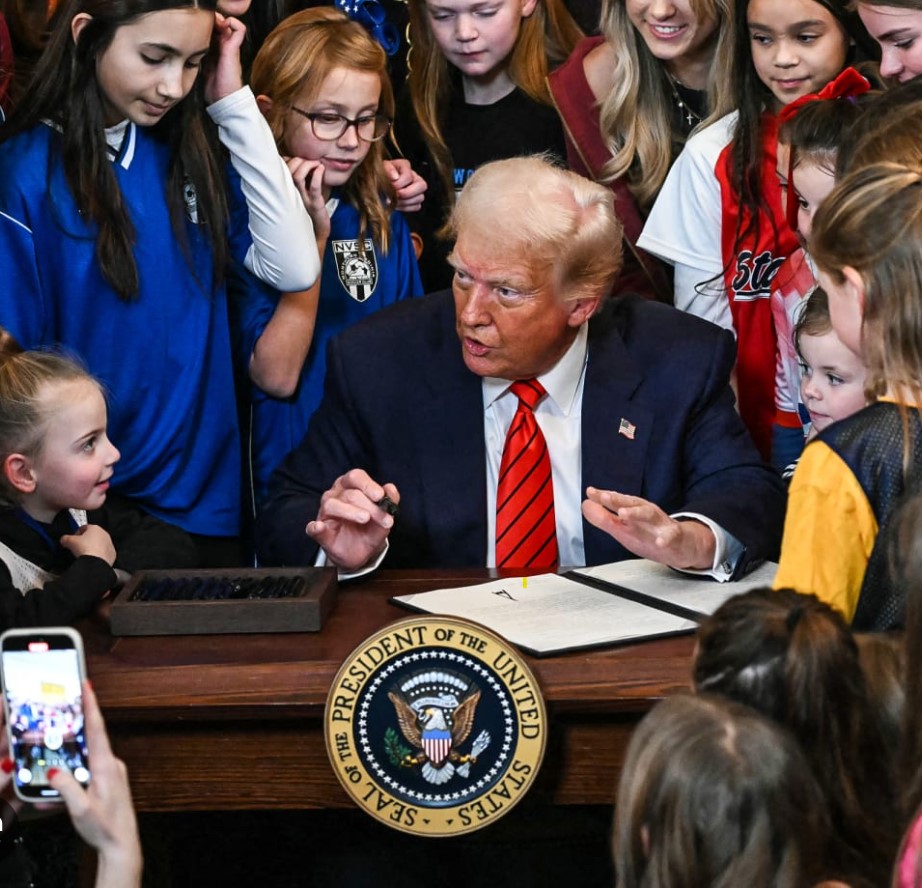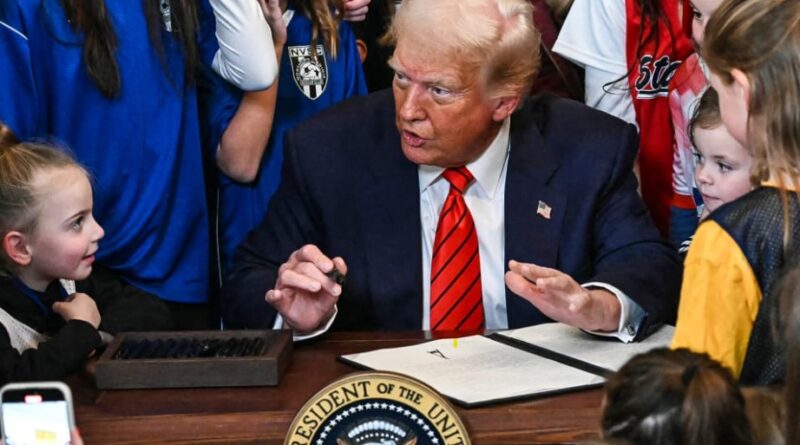Executive Order Bans Transgender Women: Exclusive Women’s Sports Victory
President Donald Trump has signed an executive order prohibiting transgender women from participating in women’s sports, delivering on a key campaign pledge and sparking nationwide debate. The order, titled “Keeping Men Out of Women’s Sports,” leverages Title IX regulations and federal influence over private sports organizations to enforce the new rule. This policy aims to uphold what the administration describes as fairness in competitive women’s athletics, but it has also ignited controversy and legal challenges from LGBTQ+ advocates and civil rights organizations.

Understanding the Executive Order: Keeping Men Out of Women’s Sports
The executive order explicitly targets transgender women—individuals assigned male at birth who identify and live as women—barring them from competing in women’s sports at all educational levels and many federally funded sports programs. Relying on Title IX, a landmark federal law enacted in 1972 that prohibits sex discrimination in federally funded education programs, the administration argues that recognizing transgender women as female athletes undermines the protections originally intended to ensure fair competition for biological females.
Title IX traditionally shields female athletes from discrimination to promote equal opportunities. However, this new interpretation contends that allowing transgender women to join women’s teams can create an “uneven playing field” due to physiological differences that may influence athletic performance. Trump framed the order as a decisive “win” against what he called a “war on women’s sports,” reinforcing his administration’s commitment to protecting the integrity of women’s athletics.
The Administration’s Strategy: Pushing Compliance and Enforcement
The executive order outlines measures to ensure compliance beyond just federal schools. It explicitly puts pressure on influential sports organizations such as the NCAA (National Collegiate Athletic Association) and the Olympic Committee to enforce rules excluding transgender women from women’s competitions. Moreover, state governments are also urged to adopt similar restrictions, with the threat of withholding federal funding from educational institutions that do not comply.
This broad approach indicates that the administration intends to use the federal government’s financial leverage to promote uniform enforcement across the country. Since many schools and sports programs rely heavily on federal grants and funding, the policy could effectively mandate adherence to the ban at multiple levels of organized sports.
Debates and Criticism Surrounding the Policy
Despite its strong rhetoric, critics of the order highlight that the scientific and empirical evidence for claims of unfair advantage by transgender women in sports remains inconclusive. Many experts argue that athletic ability is influenced by a variety of factors, including training, skill, and hormone levels, not simply biological sex assigned at birth.
Civil rights and LGBTQ+ advocacy groups have labeled the policy discriminatory and harmful to the transgender community. They emphasize that transgender women face significant challenges and discrimination already and that excluding them from sports exacerbates social stigmatization. Several states and educational institutions have pledged to oppose the order, citing concerns over the rights and wellbeing of transgender youths.
Legal challenges are expected as well, with some courts already reviewing whether the administration’s interpretation of Title IX and its application to sex identity aligns with federal civil rights protections.
Broader Implications for Women’s Sports and Inclusion
The executive order touches on a wider debate about balancing fairness and inclusion in competitive sports. While many share the goal of ensuring equitable competition for female athletes, opinions vary widely on how best to achieve this. Some advocate for nuanced policies that consider hormone levels and transition treatments rather than categorical bans.
Sports organizations like the NCAA have historically tried to navigate these issues by establishing guidelines that aim to be inclusive while recognizing potential performance differences. The federal order’s hardline approach marks a significant escalation in the partisan clash over transgender rights in America.
Conclusion: Weighing Fairness Against Inclusion
President Donald Trump’s executive order on transgender participation in women’s sports is a polarizing policy with significant consequences for athletes nationwide. By invoking Title IX and federal influence, the administration seeks to define eligibility in women’s sports strictly along biological lines, framing this as a protection of women’s competitive opportunities.
However, the debate extends beyond legal definitions to questions about fairness, identity, and human rights. Supporters argue this move preserves a level playing field, while opponents caution it marginalizes an already vulnerable group. As the policy unfolds through enforcement actions and legal scrutiny, the nation continues to grapple with how to balance respect for gender identity with the desire to maintain equitable athletic competition.
Do you support this move? The conversation is ongoing, and your perspective plays a crucial role in shaping the future of inclusive and fair sports policies in the United States.
